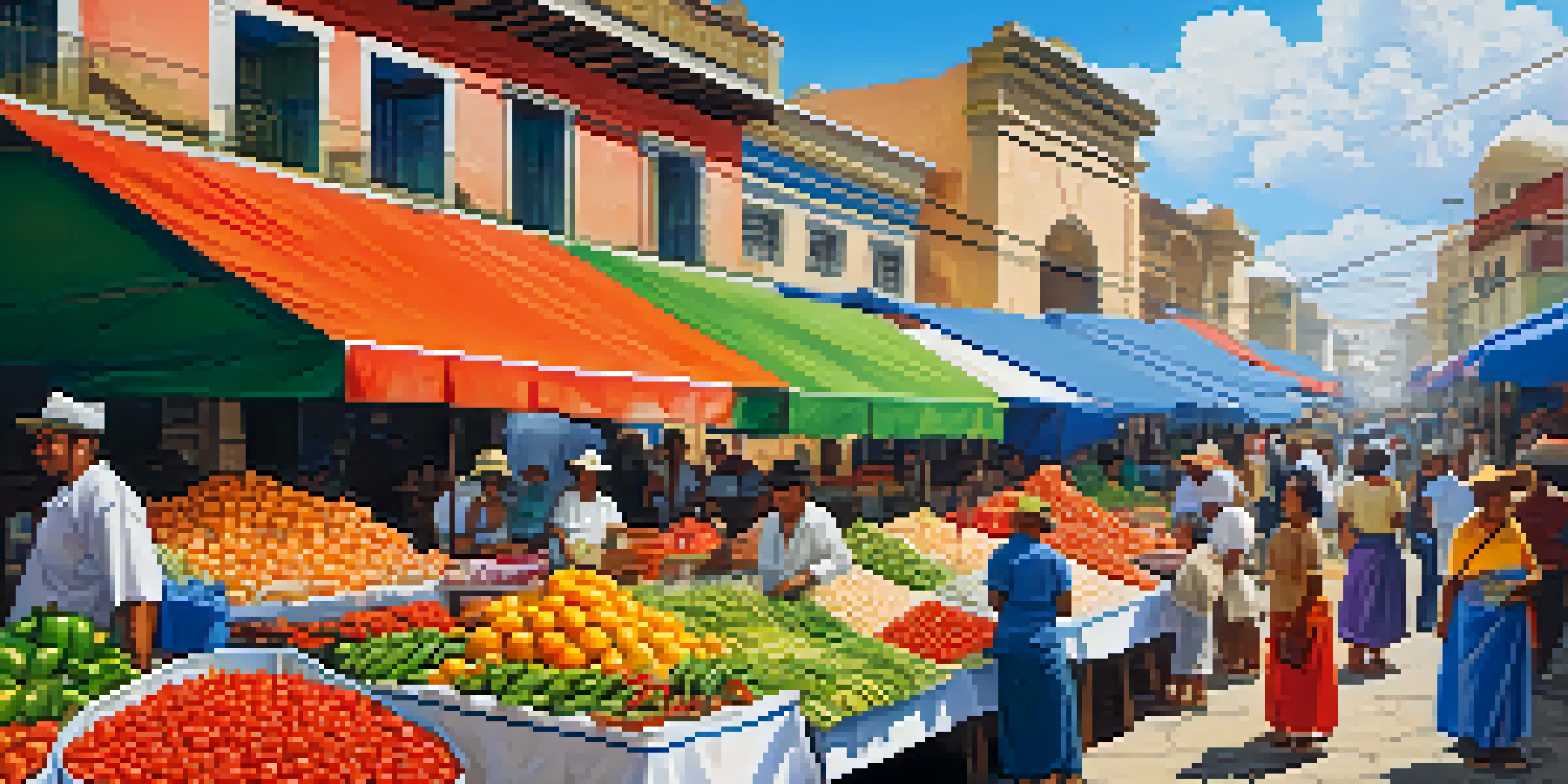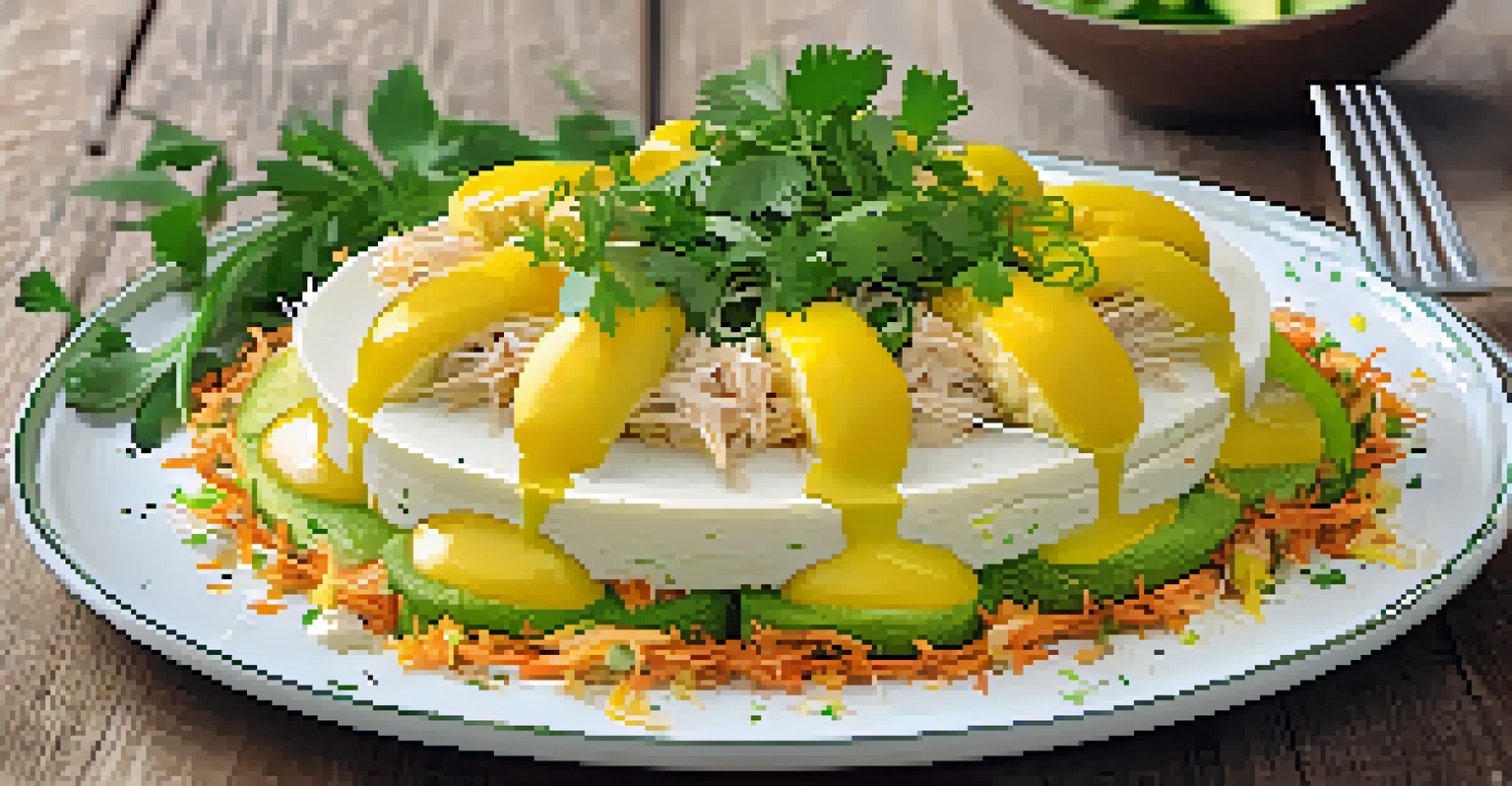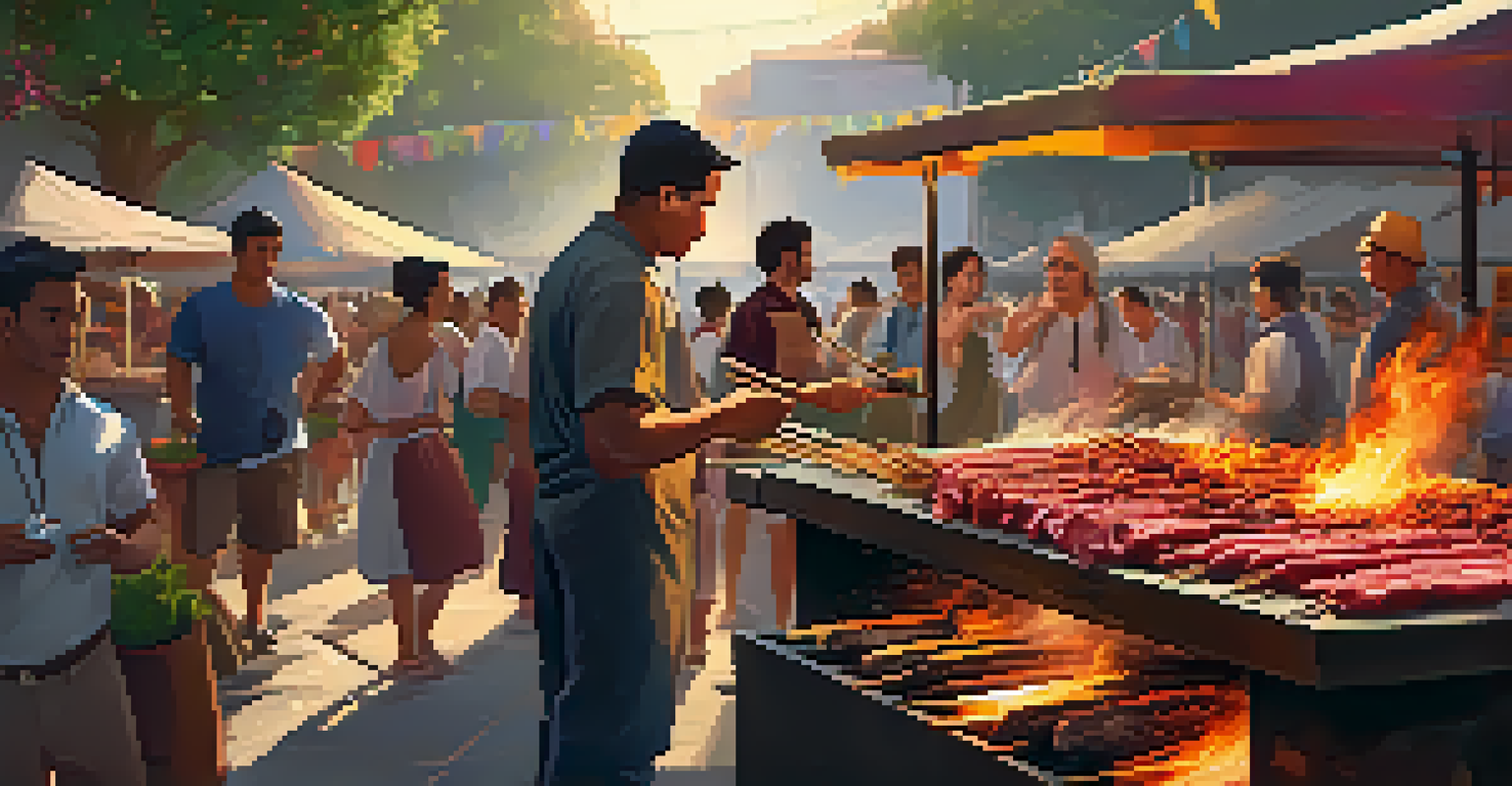How Peruvian Street Food is Captivating International Palates

The Rich Tapestry of Peruvian Culinary Heritage
Peruvian street food is a vibrant reflection of the country's diverse culture, influenced by indigenous, Spanish, African, and Asian cuisines. This blend creates a rich tapestry of flavors that captivates locals and tourists alike. From the bustling markets of Lima to the coastal towns, each dish tells a story of its regional roots and culinary traditions.
Food is a universal language that brings people together and helps us understand each other better.
One of the most famous examples is ceviche, a dish of fresh fish marinated in citrus juices, showcasing Peru’s coastal bounty. It's not just a meal; it’s a cultural experience, often served with sides of sweet potatoes and corn. The preparation and presentation of these dishes often involve local rituals, making every bite a connection to Peru's heritage.
As global interest in culinary diversity grows, Peruvian street food stands out, attracting food lovers eager to explore authentic flavors. The accessibility of these dishes in local markets allows anyone to partake in this gastronomic adventure, fostering a deeper appreciation for Peruvian culture.
Iconic Dishes That Define Peruvian Street Food
When it comes to Peruvian street food, there are standout dishes that define its character. Anticuchos, skewered and grilled beef heart, are a must-try, often served with a tangy sauce that adds a delightful kick. These skewers are a testament to Peru's ability to transform humble ingredients into something extraordinary.

Another beloved dish is causa, a layered potato dish filled with avocado, chicken, or tuna, which showcases Peru's culinary creativity and use of local produce. It’s visually appealing and bursting with flavor, making it a popular choice among street food enthusiasts. The combination of textures and tastes is both satisfying and refreshing.
Ceviche: Peru's Culinary Icon
Ceviche, a dish of fresh fish marinated in citrus juices, exemplifies Peru's rich coastal heritage and cultural significance.
These iconic dishes not only tantalize the taste buds but also represent a fusion of tradition and innovation. As more food trucks and stalls offer these specialties worldwide, they invite diners to explore the vibrant flavors of Peru, sparking curiosity and excitement.
The Role of Street Markets in Peruvian Cuisine
Street markets are the heart of Peruvian street food culture, serving as vibrant hubs of activity where locals gather to eat, socialize, and shop. These markets are alive with the sounds of sizzling grills, the aroma of spices, and the chatter of vendors and customers. They create an atmosphere full of life and connection, making dining an immersive experience.
Eating is a necessity, but cooking is an art.
One of the most famous markets, Mercado de Surquillo in Lima, offers a wide array of fresh ingredients and prepared foods that encapsulate the essence of Peruvian cuisine. Here, you can find everything from fresh seafood to exotic fruits, all while enjoying the lively ambiance. The market is a microcosm of Peru’s culinary diversity, showcasing regional specialties and traditional cooking methods.
This communal dining experience fosters a sense of belonging and appreciation for local flavors. As tourists flock to these markets, they not only enjoy delicious food but also gain insight into the cultural significance of these culinary practices, enriching their travel experience.
The Influence of Globalization on Peruvian Street Food
Globalization has played a significant role in the rise of Peruvian street food on the international stage. As travel becomes more accessible and food culture diversifies, the allure of Peruvian flavors has reached far beyond its borders. Culinary influencers and food bloggers have helped shine a spotlight on these unique dishes, encouraging more people to try them.
Fusion cuisine is also emerging, with chefs creatively blending traditional Peruvian ingredients with global flavors. For example, you might find a sushi roll infused with ceviche-inspired elements, showcasing the versatility of Peruvian cuisine. This innovation not only attracts a broader audience but also keeps the culinary scene dynamic and exciting.
Street Markets: Cultural Hubs
Peruvian street markets, like Mercado de Surquillo, serve as vibrant centers where locals and tourists experience the essence of the country's diverse culinary traditions.
As a result, international food festivals and events celebrate Peruvian street food, allowing chefs to showcase their culinary skills on a global platform. This cross-cultural exchange enriches the food landscape and ensures that Peruvian cuisine continues to evolve while staying true to its roots.
Unique Ingredients That Make Peruvian Street Food Special
Peruvian cuisine is renowned for its unique ingredients, many of which are native to the region and contribute to its distinctive flavors. For instance, aji peppers, which range from mild to fiery hot, are a staple in many dishes, adding depth and spice. These peppers not only enhance flavor but also provide a vibrant color that makes the dishes visually appealing.
Another key ingredient is quinoa, a superfood that has gained popularity worldwide. Used in a variety of street foods, quinoa adds a nutritious twist to traditional dishes, making them both hearty and healthy. Its versatility allows it to be incorporated into salads, snacks, and even desserts, showcasing the creativity of Peruvian chefs.
The use of local produce, such as potatoes and corn, further emphasizes the connection to the land and its agricultural heritage. With over 4,000 varieties of potatoes grown in Peru, each variety offers a unique taste and texture, making every dish a new experience. This focus on fresh, local ingredients is what truly sets Peruvian street food apart.
The Rise of Peruvian Cuisine in Global Food Trends
In recent years, Peruvian cuisine has emerged as a significant player in global food trends, captivating chefs and food lovers around the world. With acclaimed restaurants featuring Peruvian-inspired menus and street food pop-ups gaining popularity, the demand for authentic flavors is on the rise. This trend reflects a growing appreciation for diverse culinary experiences.
As chefs experiment with traditional recipes and modern techniques, they breathe new life into classic dishes, making them accessible to a wider audience. The rise of Peruvian food influencers and social media has also amplified this trend, allowing food enthusiasts to discover and share their favorite Peruvian dishes with friends and followers.
Sustainability in Street Food
Many Peruvian street food vendors prioritize sustainability by sourcing local ingredients and adopting eco-friendly practices, addressing modern ethical dining concerns.
This newfound recognition not only boosts tourism but also supports local economies in Peru. As the world becomes more interconnected, the demand for authentic experiences drives the popularity of Peruvian street food, inviting even more people to savor its rich flavors and cultural significance.
Sustainability and Ethical Practices in Peruvian Street Food
Sustainability is becoming a crucial aspect of the global food industry, and Peruvian street food is no exception. Many vendors prioritize using locally sourced ingredients, which not only supports local farmers but also reduces the carbon footprint associated with food transportation. This commitment to sustainability resonates with environmentally conscious consumers looking for ethical dining options.
Additionally, some street food vendors are adopting eco-friendly practices, such as using biodegradable packaging and minimizing food waste. This shift reflects a broader trend towards responsible consumption, aligning with the values of a new generation of diners who care about the impact of their choices. It’s encouraging to see traditional food practices evolve to meet contemporary demands.

By embracing sustainability, Peruvian street food not only preserves its culinary heritage but also contributes to the global movement towards ethical eating. This evolution ensures that future generations can continue to enjoy these delicious flavors while respecting the environment and supporting local communities.